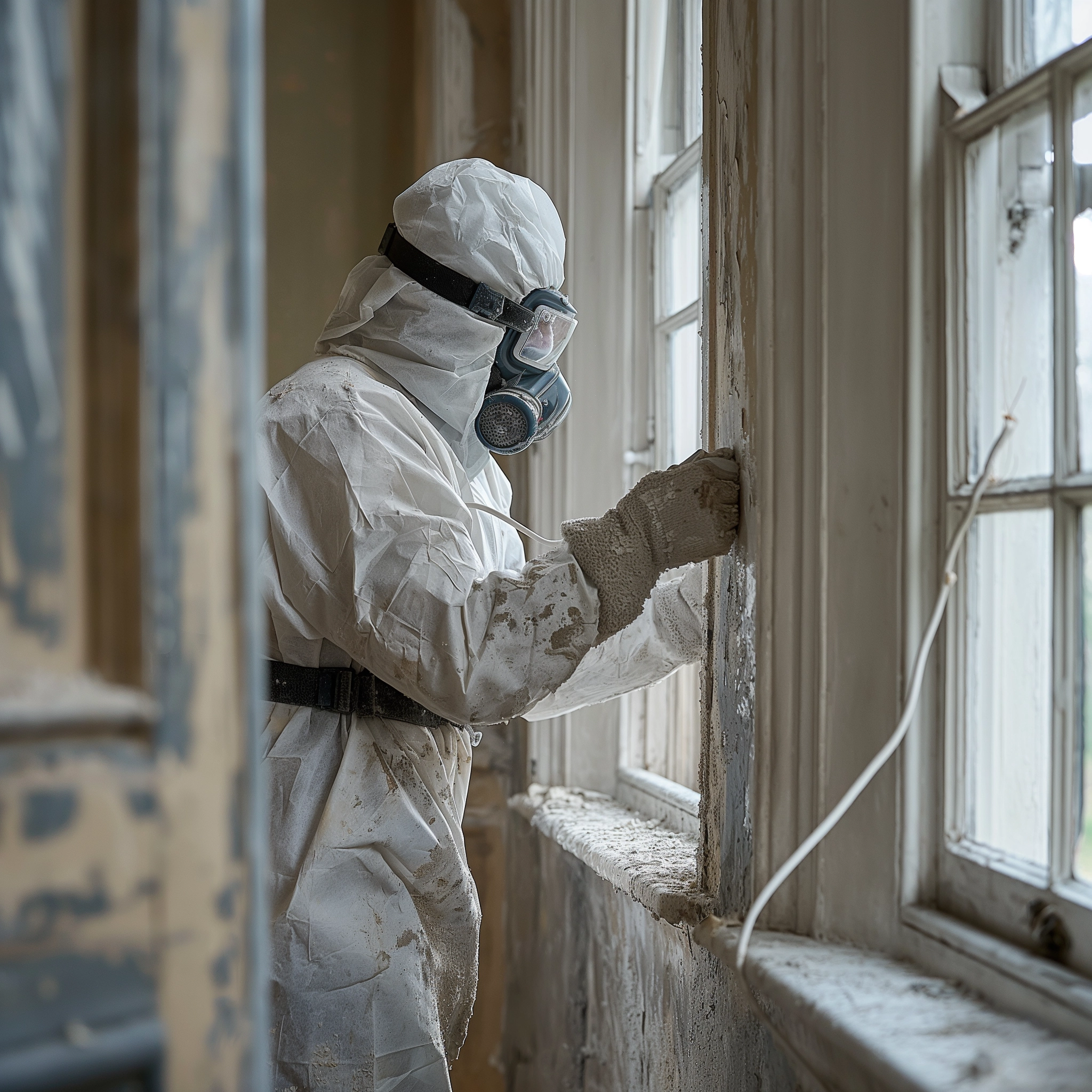Mould can be a silent but serious issue for any business, often lurking unnoticed until it becomes a visible and hazardous problem. Identifying the early signs of mould is critical to maintaining a healthy work environment and preventing structural damage.
This post outlines five clear signs that indicate the need for professional mould removal services. By understanding these indicators, business owners can take timely action to address mould issues, ensuring the safety and well-being of both their premises and the people within them.
1. Visible Mould Presence

Mould is a common issue that often goes unnoticed until it becomes a severe problem. One of the first and most apparent signs that your business requires professional mould removal services is the visible presence of mould. This can manifest in various colours, including black, white, green, or even orange and purple, and can appear in different textures, such as fuzzy, slimy, or powdery. Typically, mould thrives in moist, dark conditions, and once it establishes itself, it can spread rapidly across walls, ceilings, and other surfaces.
The visibility of mould affects the aesthetic appeal of your premises and poses significant health risks to you, your employees, and your customers. It’s a clear indicator that there are larger issues at play, typically related to moisture and inadequate ventilation. Immediate action is crucial to remove the existing mould and address the underlying issues that allowed it to flourish. Failure to act quickly can damage building materials and furnishings, which can be costly to repair.
2. Water Damage
Another critical sign that mould remediation may be necessary is the presence of water damage. Water damage can often be more insidious than visible mould because it can occur within walls, above ceilings, or under floors where it’s not immediately noticeable. Signs of water damage include discolouration, warping or swelling of materials, and peeling or bubbling paint or wallpaper. These issues often point to a moisture problem that can create a fertile ground for mould growth.
Business owners should be particularly vigilant about water damage after flooding, leaks, or high humidity levels. It’s important to conduct a thorough inspection and possibly engage professionals to assess the extent of water penetration and recommend corrective measures. Ignoring these warnings can lead to structural integrity problems and an increased risk of mould development.
3. Musty Odours
Musty odours are a telltale sign of mould presence, often detected even before mould becomes visible. These odours are typically described as earthy or damp and can strongly indicate that mould spores are proliferating in the environment. The smell may be stronger in certain areas, suggesting the presence of hidden mould colonies, possibly within walls, under carpets, or in other less visible areas.
Addressing musty odours requires more than just airing out the premises or using deodorisers, as these solutions do not eliminate the source of the smell. A comprehensive approach involves identifying moisture sources, rectifying them, and then thoroughly cleaning and treating affected areas to remove the mould.
4. Health Impact

The health impacts of mould exposure can be significant, particularly for individuals with pre-existing conditions such as asthma or other respiratory issues. Symptoms triggered by mould exposure include sneezing, coughing, throat irritation, nasal congestion, and in severe cases, skin rashes and even respiratory infections. For businesses, this can translate into increased sick leaves, decreased productivity, and potentially, liability issues if employees or customers claim health problems due to the mould.
Regular monitoring of the health of individuals within mould-prone environments is essential. If there is a noticeable increase in respiratory complaints or allergy symptoms, it may be time to consult a professional to assess mould levels within the building.
5. Excessive Humidity
Finally, excessive humidity within the building is an apparent environmental indicator of potential mould issues. High humidity levels can provide the perfect conditions for mould growth, especially if they persist for extended periods. Signs of excessive humidity include condensation on windows, walls, or pipes and a general feeling of dampness in the air.
Managing humidity can involve several strategies, such as improving ventilation, using dehumidifiers, and ensuring that heating, ventilation, and air conditioning systems (HVAC) are properly maintained and functioning. Monitoring humidity levels with hygrometers can also help maintain an environment discouraging mould growth.
“As a professional damp surveyor, I cannot stress enough the importance of regular inspections for signs of damp and mold in your property. These issues can escalate quickly, compromising not only the structure of your building but also the health of those inside it. Early detection through vigilant monitoring can save significant time and expense in repairs. Always monitor humidity levels and water damage, and consult a professional at the first sign of trouble.” – Phil Donno – Sussex Damp Treatments.
Damp Types and Effects
Understanding the various types of dampness can further help you recognise potential mould issues in your business environment. Each type of dampness affects the building differently and requires specific strategies for effective management and prevention.
Rising Damp
Rising damp occurs when moisture from the ground ascends through the porous materials of a building’s structure, such as bricks and mortar. This can lead to visible signs of moisture damage at the base of walls, including tide marks, peeling paint, and damaged plaster. The dampness can provide a conducive environment for mould growth, especially near the floor level on interior walls. To combat rising damp, improvements in ventilation and heating within the building can be effective, alongside installing damp-proof courses in the walls.
Penetrating Damp
Penetrating damp is usually the result of water ingress into the building through faults or breaches in the structure, such as cracked wall renderings or faulty roofing. This type of damp is exacerbated during rainy weather and can be identified by damp patches on walls or ceilings that appear to darken after rain. Maintaining the exterior integrity of the building with regular inspections and repairs is crucial to prevent penetrating damp and the subsequent risk of mould.
Condensation
Condensation is the most common cause of dampness and mould in buildings. It occurs when excess moisture in the air condenses on cold surfaces, such as windows or poorly insulated walls. This dampness is prevalent in environments with poor ventilation or inadequate heating. To mitigate condensation, improving air circulation through better ventilation systems, including fans and vents, and maintaining a warmer indoor temperature can be highly effective.
Prevention and Maintenance Strategies

A robust maintenance and prevention strategy is essential for any business to prevent mould growth and damp-related issues.
Environmental Control
Regular maintenance of HVAC systems ensures that air circulates efficiently and moisture levels are controlled. Integrating dehumidifiers into your environmental control systems can also help reduce indoor humidity levels, thus mitigating mould growth risks. Additionally, it is crucial to ensure that your business premises are well-ventilated, particularly in areas prone to dampness, such as basements and kitchens.
Structural Health
Regular checks on the building’s waterproofing systems and structural integrity are vital in preventing water ingress that could lead to mould. It’s important to address any signs of water pooling on the property and ensure proper drainage systems are in place. This includes cleaning gutters and downpipes to prevent blockages that could lead to water overflow and seepage into the building.
Humidity Monitoring
Using tools such as hygrometers can help you monitor indoor humidity levels regularly. Keep the humidity below 60%, ideally between 30% and 50% to discourage mould growth. Adjustments might be necessary seasonally or even daily depending on weather conditions and indoor air quality.
Professional Involvement
Expert Assessment
An expert assessment is vital for accurately identifying a mould problem’s extent and its source. Mould specialists can offer insights into the specific types of mould present and their potential damages or health risks. They can also pinpoint the exact causes of mould, which often extends beyond simple dampness to include issues like poor building design or failure in ventilation systems.
Specialised Treatment Plans
Early professional intervention is crucial. Mould remediation specialists can develop tailored treatment plans that remove the mould and address the source of the moisture that allows it to flourish. This can include structural repairs, improvements in ventilation, and changes in ongoing maintenance practices.
Conclusive Thoughts
Recognising the signs of mould and understanding the different types of damp are crucial in maintaining a healthy business environment. Implementing effective prevention strategies and regular maintenance checks can mitigate mould risks significantly. Professional assessments and tailored treatment plans are essential for comprehensively addressing both visible and hidden mould issues.
By taking proactive steps to manage moisture and improve air quality, business owners can protect both their property and the health of their employees and customers, ensuring a safer, more productive workplace.




















































